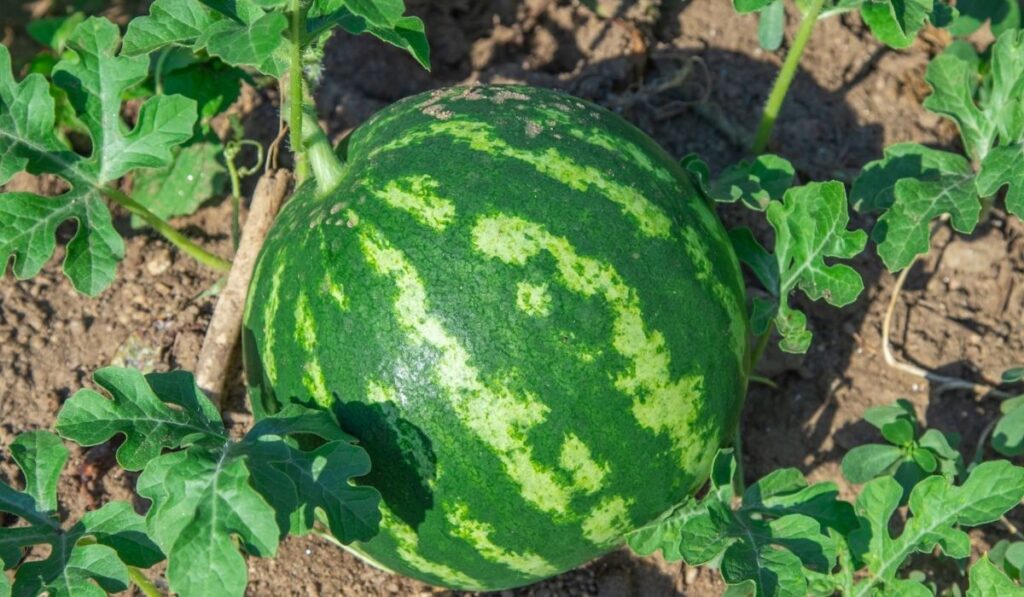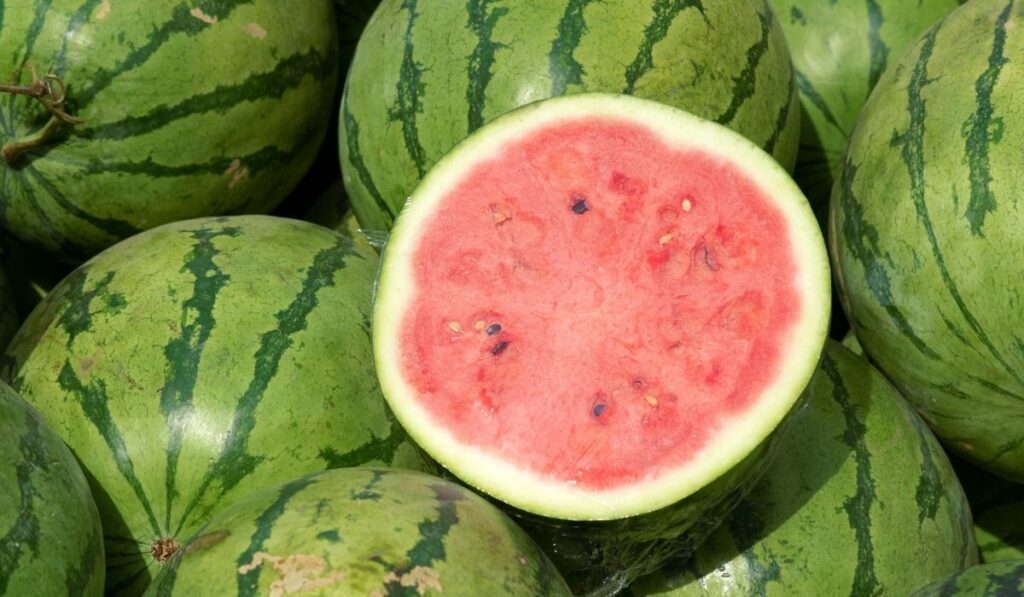Watermelon is a very popular thirst-quenching fruit that packs a ton of nutrients including vitamin C, calories, and antioxidants. Eating watermelon regularly can help blood pressure, reduce inflammation, and improve heart health and digestion. But when’s the best time to enjoy this amazing fruit?
Watermelon is in season during warm months (basically summer) across the US. Different states have different seasons, though the fruit is typically available in most places throughout the year. Choosing ripe watermelons is pretty straight forward-tap it and listen for a deep, hollow sound.
Getting hungry yet? Let’s learn more about this amazing fruit, including when it’s in season, how to choose the best melon, and proper storage techniques.
When Is Watermelon in Season?

As we mentioned, watermelons are available throughout the year, but if you’re looking for the freshest, crunchiest, tastiest, and cheapest fruits, look out for the time the fruit is in season. In most states, the watermelon season peaks during the warmer months.
That means that in warmer states, watermelon season starts as early as May and June through to August and September. In colder areas, the fruits peak by the end of July, through to September, October, and November.
Watermelon is normally in season from May or June in Arizona, Alabama, Arizona, Texas, Florida, Idaho, Hawaii, Iowa, Louisiana, Mississippi, Missouri, and Nevada.
July is the beginning of watermelon season in states such as Arkansas, California, Delaware, Indiana, Maryland, Nebraska, New Mexico, Oregon, North Carolina, Virginia, Pennsylvania, Rhode Island, and Tennessee.
Other states enjoy a late watermelon season starting from August, including Connecticut, Kentucky, Maine, Massachusetts, Michigan, Minnesota, Montana, North Dakota, New Jersey, Ohio, South Dakota, Vermont, Wisconsin, Wyoming, West Virginia, and Washington.
For some states, such as New York, Utah, and Colorado, watermelon comes later in the year — from September.
If watermelon isn’t in season where you’re at, your options are pretty limited. Because of how much moisture is in watermelon, and how fragile the fruit is inside, there really isn’t any “dried” watermelon option. In the off-season, your best bet is watermelon-juice-flavored beverages like Mela Water Natural Watermelon Juice Drink (on Amazon).
How to Tell When a Watermelon Is Ripe

Watermelons might just be summer’s most beloved treat, and you’ll see them around everywhere when in season. But choosing the sweetest fruit is difficult, and you might pick a watermelon that’s overripe, mealy, watery, and flavorless, even when it’s watermelon season.
To avoid disappointment, learn how to pick a ripe watermelon. Here are some tips to help you out:
- Look for a brown and dry stem: Check for a brown stem — it shows the watermelon has had enough time to ripen. The blossom end also softens.
- Tap the fruit: Use your knuckles to rap the fruit and listen. A ripe watermelon makes a deep hollow sound. Farmers have used this method for a long time, though there’s no scientific explanation behind the technique.
- Check the color: A ripe watermelon has dull, green skin as opposed to a shiny, dewy complexion. It also has a hint of yellowing on the skin, which is a sign of a well-matured fruit. .
- Pick the fruit: A ripe melon is heavy and has a hard rind. If you have two similar looking watermelons, always pick the heavier one to enjoy a juicy summer treat.
- Look for webbing: Besides the dull appearance, look for webbing, which is another sign of sweetness.
- Look for a sugar spot: Pick a watermelon with a brown rough patch — another sign of a matured/ripe fruit.
- Look for a creamy yellow patch: Turn the watermelon and check the underbelly for a yellow patch. This is a sign that the fruit ripened on the vine in a natural environment under the sun.
- For a cut watermelon: Pick one with bright red flesh. A ripe watermelon has mature dark brown/black seeds.
Of course, the proof of the pudding is in the flavor, and you can only confirm if you’ve picked a ripe sweet fruit after tasting it. Still, with these simple tips, you reduce the chances of picking a tasteless, underwhelming watermelon.
How to Store Watermelon
After successfully picking a ripe watermelon, you’ve got to store it properly to make the most out of it. You can use the slices for creative salads, drinks, or other recipes in summer.
If the melon you’ve picked isn’t ripe, it won’t develop a better taste even if you store it for a while. The fruit goes bad if stored for an extended period or in poor conditions.
You can store a ripe watermelon in your kitchen at room temperature for about a week. However, to enjoy the best of a watermelon, don’t store it for long.
For cut watermelon, use storage containers or zipper bags to keep the slices or pieces for about a week. You can also wrap larger chunks and refrigerate them for a few days.
You can freeze your watermelon cubes for a smoothie or other drinks, but not for salads or snacks. To freeze the pieces, place them on a freezer pan or baking sheet and transfer them into a zipper bag once frozen.
